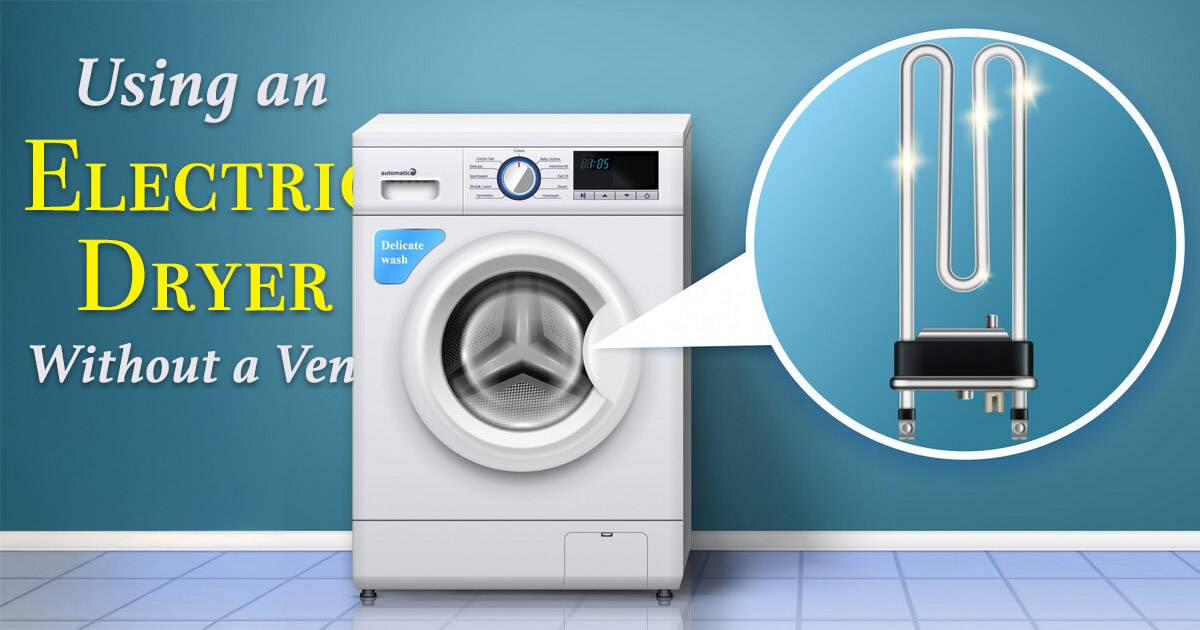Using an Electric Dryer Without a Vent: Is It Possible?

Electric dryers are a common appliance in many homes, but there’s often some confusion about whether or not they need a vent. While traditional dryers use vents to remove heat, moisture, and lint from the machine, there are other options available today that don’t require external venting. This guide will dive into the differences, benefits, and drawbacks of vented and ventless electric dryers to help you decide which is best for your space.
Ventless vs. Vented Electric Dryer
Electric dryers generally fall into two categories: vented and ventless. Vented dryers work by pushing warm, moist air outside through a duct or vent. This keeps the interior of your home free of humidity but requires a dedicated venting space. On the other hand, ventless dryers, such as condenser and heat pump models, are self-contained and don’t require an external vent. Instead, they recycle air within the machine to dry clothes and use condensation to manage moisture, making them ideal for homes without existing vent access.
Do You Really Need a Vent for Your Electric Dryer?
Whether you need a vent depends largely on your dryer model and where it will be used. Standard vented dryers do need a vent to expel hot, damp air, which helps prevent mold growth, property damage, and lint buildup indoors. However, if venting isn’t an option, ventless dryers are designed to operate without external venting. These are especially popular in apartments and older homes without a designated venting space. So, while not every dryer type strictly requires a vent, knowing the difference can help you choose the right setup for your space.
How Do Ventless Electric Dryers Work?
Ventless dryers, like condenser and heat pump dryers, work differently from vented models. They use a closed-loop system where warm air circulates through the drum, collecting moisture from the clothes. Instead of pushing this air outside, the dryer cools the air to condense the moisture, which is then collected in a water tank or drained out.
The air is reheated and reused in the drying process, making ventless dryers more energy-efficient. This setup keeps humidity levels manageable indoors, although ventless dryers can sometimes take longer to complete a drying cycle compared to vented ones.
Advantages of Vented Dryers
For those with vent access, vented dryers offer several benefits.
Smaller Initial Investment
Vented dryers tend to be more affordable upfront than ventless models, as they don’t require the advanced technology of heat pumps or condensation systems.
More Effective
Vented dryers are generally faster at drying clothes, as they use a direct system to expel moisture, making them suitable for large households with frequent laundry loads.
More Load Capabilities
their straightforward venting system, vented dryers can often handle larger loads without compromising drying speed, making them ideal for bigger families.
Fewer Risk of Mold Growth
By venting moisture outside, vented dryers reduce the chance of indoor mold growth, especially in smaller or poorly ventilated laundry rooms.
Lesser Humidity Levels
With vented dryers, humidity is expelled outside rather than being released into the room, keeping indoor air quality at a comfortable level.
Drawbacks of Vented Electric Dryers
While vented dryers have their benefits, they also come with some drawbacks.
Takes Up Space in Your Home
Vented dryers require a dedicated venting area, which may take up additional wall or floor space. This setup isn’t always feasible in compact apartments or homes where installing an external vent is challenging.
May Use More Energy
Since vented dryers lack the energy-saving technology found in some ventless models, they may consume more energy over time. This is especially true if the dryer needs to run multiple cycles to handle heavy loads, as vented dryers rely on constant heat generation and airflow.
Complex Installation
Installing a vented dryer can be more involved. It requires a vent duct, which may need professional installation, especially in homes that lack an existing vent. Ensuring a clear, safe vent path also requires regular cleaning and maintenance to prevent lint buildup and potential fire hazards.
How Much Do Vented Dryers Cost?
The cost of a vented dryer can vary widely depending on brand, model, and features, but on average, vented dryers are generally more affordable than ventless options. Basic vented dryers can start at around $300 to $400, while high-end models with more advanced drying options can go up to $1,000 or more. However, keep in mind that additional installation costs may apply if a vent system needs to be added or modified.
Are They Worth It?
Vented dryers remain a solid choice for many households, particularly those with larger laundry needs and existing vent access. They offer quicker drying times and cost savings up front, making them ideal for frequent use. However, for those in apartments or homes where venting isn’t possible, ventless dryers provide a viable alternative, though at a higher upfront cost. Ultimately, the decision depends on your space, drying needs, and budget.
Choosing the Right Dryer for Your Needs
Choosing between a vented and ventless electric dryer comes down to understanding your home’s layout and your laundry habits. Vented dryers are powerful, efficient, and cost-effective if you have proper vent access, while ventless dryers offer flexibility in spaces without vents. Both types have their pros and cons, so consider your setup and drying needs to find the best fit for your home.
